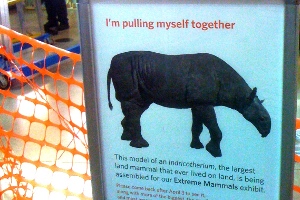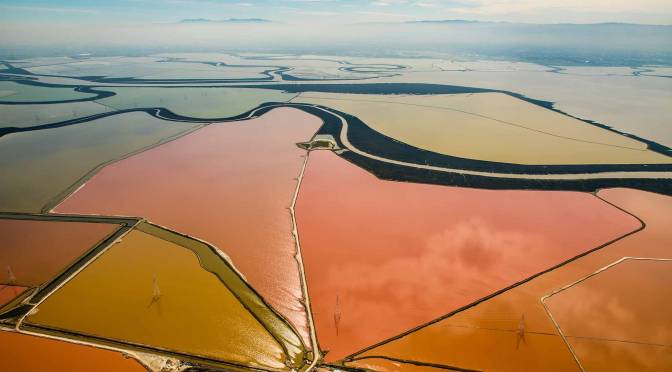 The largest land mammal ever to live at 25 feet in length, 17 feet tall and nearly weighing 18 tons.
The largest land mammal ever to live at 25 feet in length, 17 feet tall and nearly weighing 18 tons.
When I was traveling across the museum floor this morning, I saw four colossal legs splayed out. However many helping hands of the exhibit team were carefully placing those legs all under the canopy of a supporting crane. The area holding the legs was closed off and a sign stanchioned just outside read “I’m pulling myself together: This model of an Indricotherium, the largest land mammal that ever lived on land, is being assembled for our Extreme Mammals exhibit.”
With Extreme Mammals opening in less than a month, new boxes and displays are popping up every day. During NightLife, I got to meet a few members of the exhibit team from the American Museum of Natural History in New York who are overseeing the installment of Extreme Mammals at the Academy. And I was still in the building at 11pm, when a moving truck full of crates for the exhibit pulled into the loading dock.
But the life size replica of the Indricotherium stands taller amongst the rest of specimens – literally. As the largest land mammal ever to live at 25 feet in length, 17 feet tall and nearly weighing 18 tons; this replica dwarfs the T-Rex skeleton that used to take up its footprint but has since moved into the lobby. However, the blue whale still casts a mighty shadow over the Indricotherium. Weighing in at 180 tons, it would take 18 Indricotheriums to match the size of the largest mammal in the oceans today.
The relative today of Indricotheriums are modern day Rhinos and horses. Why are they so tiny in size compared to their prehistoric relative? The Indricotherium lived during the late Oligocene Epoch. During that time the Earth’s topography consisted of dry, seasonal scrublands. The Indricotherium could reach the tops of trees, which was too high for most grazers giving it a food niche that added to its massive size. As well, Indricotherium was well suited to exploit this food source. Its large head was supported by a thick neck, one that was flexible enough to allow the head to point upwards in pursuit of hard to reach vegetation. The Indricotherium had tusk like teeth that could snap off vegetation and molars to then grind it down. Like Rhinos, the Indricotherium also had a prehensile upper lip that allowed it to strip vegetation.
